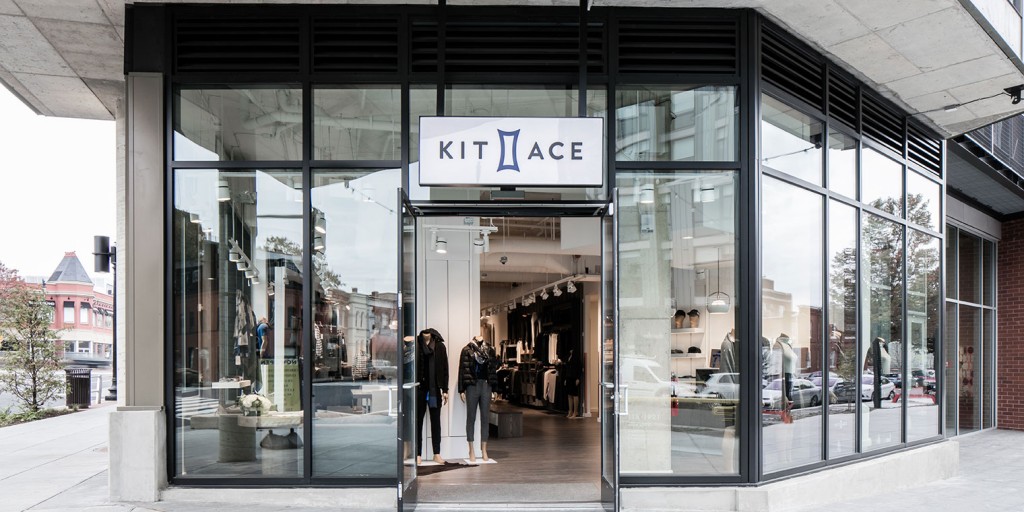Tracking Kit and Ace: A timeline of embarrassing failures stretching back to February 2016.
VANCOUVER — Last week, with practically no warning or advanced notice before doing so, Kit and Ace, the activewear (and meditation) brand owned by Lululemon founder Chip Wilson and family, closed all of its stores outside of Canada. This included its locations in the US, the UK, and Australia. The total closure count: 36 locations out of 45, amounting to a whopping 80% of its entire retail footprint.
It’s an embarrassing retreat from the Wilson family’s loudly proclaimed goal in 2015 of building out 95 Kit and Ace stores across the globe by 2019 — and taking out $300M in debt to do so. Fortunately for them, they never did take on that debt. Had they done so (and that’s even if banks and lenders would have ever been willing to lend them that sum amid today’s current retail downturn), they would’ve been in big trouble — even more than they’re in right now.

This latest backtrack from Kit and Ace is just the most recent in a troubling series of missteps and poor strategy, dating back to 2016. We’ve detailed that timeline below.
It’s all been compressed within a small, 14-month window.
- February 2016 — First round of layoffs: Kit and Ace lays off 35 people from its head office staff, 10% of its HQ staff at the time.
- September 2016 — Scaling back unicorn ambitions and second round of layoffs: Lays off 20% of its head office staff of 280 (56 people), Chip Wilson, who’d played more of an advisor role up to then, snatches control from his son JJ (who started the brand alongside his stepmother Shannon). JJ stays on the board, but is removed from executive duties.
- February 2017 — Pivoting into meditation: Another strange sign that something was wrong. For a brand that has been pushing its premium active angle — and its ‘technical cashmere’ that it is supposedly as luxurious as it is performance-driven — stepping over into ‘mindfulness’ and meditation, an activity that is the exact opposite of active, we viewed as a head-scratcher.
- April 2017 — Massive UK, US, and Australia store closures: We see them close 36 of 45 global locations, refocus resources to online sales (a wise move), once again lay off head office staff, and also lay off its entire retail workforce in those markets (employees who, for the record, were given no advance notice).
Three reasons why is this happening.
1. Activewear remains oversaturated. As we detailed in our report last September, Kit and Ace is finding that the activewear category is a tough, tough one to be in. Technical cashmere isn’t enough to rely on — and frankly, it may be that customers are seeing past the marketing speak and clever branding.
2. Kit and Ace is too much like Everlane (and without the transparent pricing). Kit and Ace’s main problem — aside from investing too much operating capital into permanent retail far too early — is that they’re not very distinguishable from Everlane. And for as much grief as Lean Luxe tends to give Everlane for being sanctimonious, self-serious, and preachy, you feel that in a head-to-head, Everlane has stronger brand recognition, and a more defined sense of self.
Everlane also has better pricing for comparable quality products — and crucially they have been smart in not over-extending themselves with standalone permanent locations. For years, CEO Michael Preysman had stated that he was opposed to the very idea of opening up a permanent Everlane location, and only last year finally did so with a permanent showroom in their home city of San Francisco. On the whole, Everlane has relied heavily on pop-ups for creating real life presence, instead of length, expensive leases.
3. It’s a different ballgame today compared to when Lululemon first began. Even having created an activewear unicorn with Lululemon, it’s important to remember that it took 18 years to build it, and that Lulu came to life at a time when the category was vacant. Today that’s simply not the case, and what we’re seeing now is Wilson gradually coming to terms with the fact that the game is unquestionably tougher. He seems to also realize now that trying to build out a global brick and mortar operation for a brand new company competing in an overstuffed category is simply not a winning formula right now. Leaner is better. There’s a reason why online-based brands are taking their time in establishing permanent locations.
What’s next for Kit and Ace?
All appearances and behaviors point to a major shift in priorities at Kit and Ace HQ in Vancouver. Canadian retail will continue to exist (they still have nine stores there), and global ecommerce isn’t going anywhere. But those lofty, grand ambitions of reaching 95 global stores by 2019 are simply over for the foreseeable future.
Should we expect Kit and Ace to fold? That seems unlikely, though these gradual, consistent moves of scaling back are certainly a worrying sign. One thing is for sure: Kit and Ace must figure out its strategy, and it must do so sooner rather than later.
Reporting Queue
-
Kevinj






